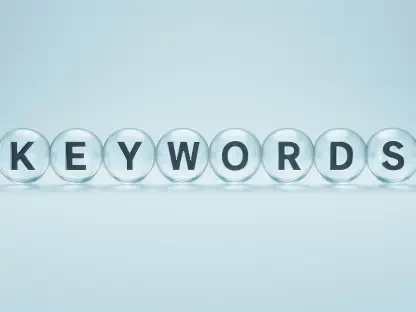One of the trickier balancing acts of B2B sales is keeping your customers’ attention throughout a lengthy sales cycle. This process is known for being long and drawn out and requires meticulous decision-making. During this time, customers can end up in a competitor’s lead funnel.
For businesses, the key lies in shrinking these customer sales cycles, a task that’s easier said than done. However, with a well-designed demand generation funnel, you can present your potential clients with the right information at precisely the right moment. This approach not only shortens their sales cycle but also streamlines the decision-making process, ultimately working in your favor.
Attain Your Goals
Creating a demand generation funnel is a valuable exercise that can assist you in various ways. By closely examining and revisiting your marketing objectives, you can expedite realizing your goals. Creating your funnel requires establishing key performance indicators (KPIs) that align your marketing objectives with your end goals.
Additionally, these KPIs serve as valuable instruments for tracking the effectiveness of your marketing initiatives and promoting unity and alignment among your team and throughout your organization.
Identify the Marketing-Qualified Leads (MQLs)
Let’s face it, not all leads are ready for marketing attention. In truth, only a small portion of your potential leads can be considered MQLs.
Use a demand generation pipeline to pinpoint these MQLs within your funnel. Afterward, focus on converting them into SQLs (sales-qualified leads). This strategic move not only reduces your customer acquisition costs but also optimizes your spending by directing it towards leads that are already warming up, potentially boosting your profits.
Know Where Your Leads Stand
The four steps of a typical demand-creation process are awareness, interest, decision, and action. A lead that is present at each level has unique preferences and needs.
As a result, when you have a correct funnel, you can see where each lead is in the funnel. This will enable you to convert your leads more quickly by using the appropriate marketing resources. To take this further, consider collaborating with a demand generation services provider to craft a customized funnel.
They bring expertise in aligning your strategies with the specific needs of your leads at each stage. This partnership enhances your ability to convert leads efficiently and effectively, ultimately driving growth and success.
Earn Customer Trust
Trust is the bedrock of nurturing strong relationships with your customers. A study shows that 90% of consumers are willing to shell out extra bucks for trustworthy brands. Now, here’s where a well-crafted demand generation strategy comes into play.
In the B2B industry, trust is paramount. But, with your trust-building techniques, you can establish a solid connection with potential customers and gradually persuade them to choose your product or services. It’s all about cultivating that trust factor!
Boost Your Conversion Rate
Attracting traffic and leads can be relatively straightforward, especially with the help of paid ads and social media automation.
Your conversion rate is the measure of how many leads turn into paying customers. You can keep a keen eye on your conversion rate with a well-thought-out strategy. This ensures that your conversion rate remains favorable, considering the resources you invest in your marketing endeavors. It will help you turn interested prospects into satisfied customers.
A Gartner report states that 75% of B2B buyers conduct their own research before contacting the sales team. Furthermore, 77% of B2B buyers mentioned that their most recent purchase was complex, leading them to reevaluate their decision.
This shows that today’s buyers are more informed and certain about what they want. To increase brand visibility and educate customers effectively, businesses must shift their focus to the demand generation funnel.
This funnel doesn’t follow the old “sell, sell, sell” approach. Instead, it’s all about providing real value to potential customers. This means that the methods and techniques for building this kind of funnel are about delivering value and keeping the customer at the center.
Streamline Your Marketing Strategy
The world of digital marketing can be overwhelming, with a wide array of free and paid strategies to choose from. Crafting a sales funnel can serve as your guiding light in this complex landscape.
It streamlines your marketing process and enables you to concentrate on tactics that can fuel your company’s expansion.
What’s more, a well-designed sales funnel allows you to monitor and track your marketing campaign closely. This invaluable insight empowers you to maximize your return on investment (ROI) by optimizing your marketing spend.
3 Crucial Steps to Build an Effective Demand Generation Funnel
Creating a demand generation funnel in marketing involves a diverse set of strategies tailored to your company’s goals. To effectively reach potential clients, aligning various marketing approaches is essential. It’s crucial to structure these demand generation campaigns into a well-defined funnel to establish a more robust connection with prospects. Here are the steps to construct a dynamic demand generation funnel:
Step 1. Define Your Objectives
Every marketing initiative begins by identifying your company’s goals. Without a clear grasp of your needs, you won’t find the ideal methods to achieve those objectives. Therefore, gather your marketing and sales teams to establish clear demand marketing goals. Once you have these objectives, you can start crafting your marketing strategies.
Let’s say you’re on a mission to boost your sales in the next month. Starting a whole new marketing campaign might not be the quickest path to success, given the time crunch. Instead, think about using the power of email marketing, especially with your current customers.
By analyzing what they’ve purchased before, you can create personalized offers that resonate with them. To top it off, you can also suggest additional products or upgrades that align with their past buying patterns. This way, you’re on the fast track to boosting those sales!
Step 2: Create Buyer Personas
To sell your services successfully, you need to identify your target audience. If you’re not offering something groundbreaking, your product likely already exists in the market. So, the key is to identify the characteristics and challenges of your potential customers.
The best way to get inside your customers’ heads is by crafting buyer personas. These are essentially fictional representations of your ideal customers. Understanding your real customers starts with creating these personas, and it’s a game-changer for your approach.
When building buyer personas, brands often consider broad factors like customer interests, income levels, and preferences. However, it’s essential to understand your products and services and define criteria to build your buyer persona and demand generation framework.
Step 3: Creating Targeted Content for Each Demand Generation Phase
Now, let’s take a closer look at the pivotal role of content in your digital marketing strategy. Think of content marketing as the core and essence of your entire plan. Every other aspect, whether it’s your social media efforts or digital advertising, hinges on the quality and effectiveness of your content. It’s abundantly clear that investing in high-quality content is not a choice but a necessity when your goal is to stimulate demand for your products or services.
However, haphazardly churning out blog posts or random social media updates won’t suffice in today’s fiercely competitive landscape. To genuinely connect with your potential customers at every stage of the demand generation process, you must curate content tailored for each phase.
This will help you provide them with the information they require, precisely when they require it, thus steering them toward making well-considered purchase decisions.
Concluding Thoughts
With the help of a strong demand generation funnel, marketing and sales teams can work to create a seamless process for B2B sales campaigns. The aim is to shorten the sales cycle while still providing buyers with all the information they need to decide on an account.
The ultimate aim is to create harmony between KPIs and objectives, establish a clear strategy, and create a targeted approach. This helps a business put the right information in front of B2B buyers at the right time. A demand funnel creates a seamless process for buyers, optimizing the B2B sales experience and reducing the risk of competitor take-over.









